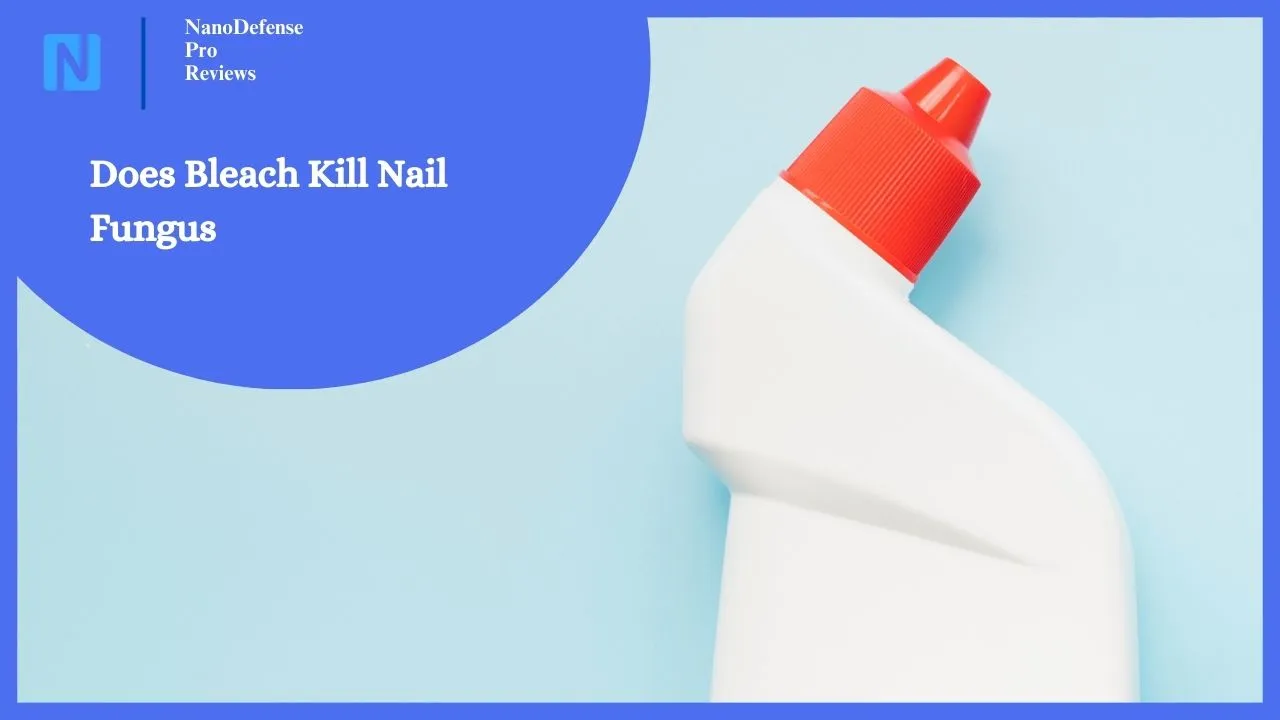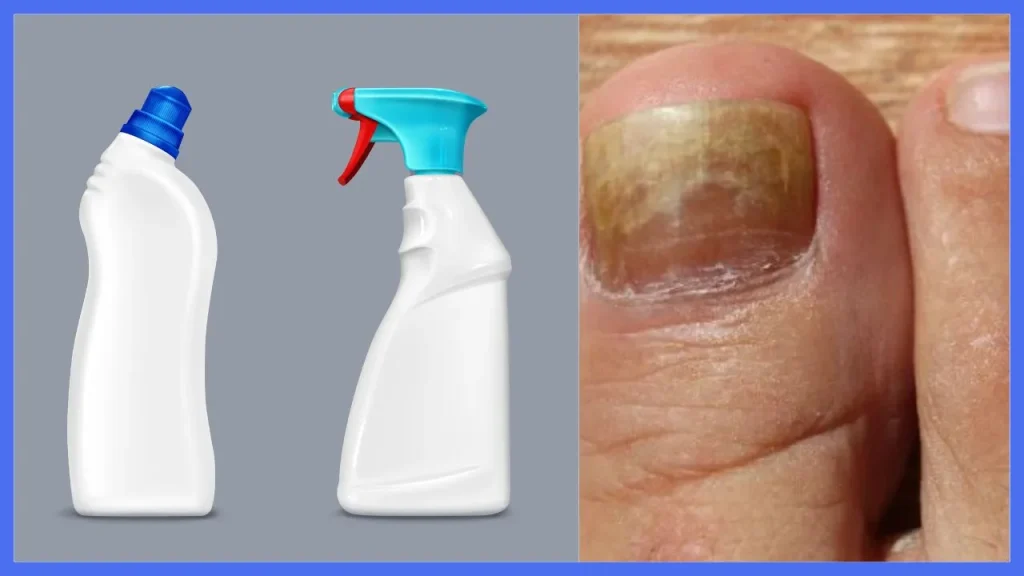Does Bleach Kill Nail Fungus? An In-Depth Look
Does bleach kill nail fungus? This in-depth article explores the potential benefits and risks of using bleach, a harsh chemical, for treating nail fungus. It covers alternative treatments, preventative measures, and weighs the pros and cons to help readers make an informed decision.

Disclaimer: This article has been generated with the assistance of AI tools. While our research team has fact-checked the content, readers should independently verify information for accuracy and reliability.
Nail fungus, also known as onychomycosis, is a common and persistent problem that affects millions of people worldwide. This unsightly condition can cause discoloration, thickening, and brittleness of the nails, making them prone to cracking and splitting. While there are various over-the-counter and prescription treatments available, some people turn to household remedies like bleach in an attempt to get rid of the fungus. But does bleach kill nail fungus effectively? Let’s delve deeper into this topic.
Understanding Nail Fungus

Before we explore the potential effects of bleach on nail fungus, it’s essential to understand the nature of this condition. Nail fungus is typically caused by dermatophyte fungi, which thrive in warm, moist environments such as showers, swimming pools, and locker rooms. These fungi can penetrate the nail bed and feed on the keratin protein that makes up the nails, leading to an unsightly appearance and potential discomfort.
Causes and Risk Factors Several factors can increase the risk of developing nail fungus, including:
- Aging
- Poor circulation
- Diabetes
- Weakened immune system
- Excessive sweating
- Trauma to the nails
- Sharing personal items like nail clippers or towels
Does Bleach Kill Nail Fungus: The Bleach Debate
When it comes to using bleach to treat nail fungus, opinions are divided. While some people swear by its efficacy, others remain skeptical about its ability to eradicate the fungal infection.
The Potential Benefits of Bleach
Bleach, also known as sodium hypochlorite, is a powerful oxidizing agent with antimicrobial properties. It has been used for decades as a disinfectant and cleaning agent due to its ability to kill bacteria, viruses, and fungi. Proponents of using bleach for nail fungus argue that its strong oxidizing power can penetrate the nail and destroy the fungal cells.
However, it’s important to note that the effectiveness of bleach in treating nail fungus has not been extensively studied or scientifically proven. Most of the anecdotal evidence comes from personal accounts and home remedies shared online or through word of mouth.
Potential Risks and Drawbacks
While bleach may seem like a convenient and inexpensive solution, it is essential to consider the potential risks and drawbacks associated with its use.
- Skin and Nail Irritation Bleach is a harsh chemical that can cause skin and nail irritation, especially with prolonged or repeated exposure. It can lead to redness, burning, itching, and even chemical burns if not used carefully.
- Respiratory Issues The fumes released by bleach can be irritating to the eyes, nose, and lungs, particularly in poorly ventilated areas. Inhaling bleach fumes can cause coughing, wheezing, and difficulty breathing, especially for individuals with pre-existing respiratory conditions.
- Ineffectiveness for Severe Cases While bleach may be effective for mild to moderate cases of nail fungus, it may not be potent enough to penetrate and eradicate severe or long-standing infections. In such cases, professional medical treatment may be necessary.
- Potential Interactions Bleach can react with other household chemicals, creating toxic fumes or dangerous chemical compounds. It is crucial to exercise caution when using bleach and avoid mixing it with other cleaning products or substances.
Alternative Treatments: Does Bleach Kill Nail Fungus
If you’re hesitant about using bleach or have concerns about its potential risks, there are several alternative treatments available for nail fungus. These include:
- Over-the-Counter Antifungal Medications Various topical antifungal creams, solutions, and lacquers are available over the counter and can be effective in treating mild to moderate cases of nail fungus.
- Prescription Oral Antifungal Medications For more severe or persistent cases, your healthcare provider may prescribe oral antifungal medications, such as terbinafine or itraconazole, which work systemically to combat the fungal infection.
- Laser Treatment Laser therapy is a relatively new and effective treatment option that uses targeted light to destroy the fungal cells without damaging the surrounding healthy nail tissue.
- Natural Remedies Some people have found success with natural remedies like tea tree oil, apple cider vinegar, or Vicks VapoRub, although their efficacy may vary, and they should be used with caution.
Proper Nail Care and Prevention
The Centers for Disease Control and Prevention (CDC) recommends seeing a board-certified dermatologist for diagnosis and treatment of toenails Regardless of the treatment method chosen, it is crucial to practice proper nail care and take preventive measures to reduce the risk of recurring or new fungal infections.
- Keep nails trimmed and clean
- Wear breathable shoes and socks
- Avoid walking barefoot in public areas
- Disinfect nail clippers and other personal items
- Maintain good foot hygiene and allow nails to dry thoroughly after bathing or swimming
Related: Toothpaste For Toenail Fungus: Does It Work?
Does Bleach Kill Nail Fungus: Conclusion
Weigh the Pros and Cons In conclusion, while some people claim that bleach can be effective in treating nail fungus, its efficacy is not scientifically proven, and its use carries potential risks. If you’re considering using bleach to treat nail fungus, it’s essential to weigh the pros and cons carefully and consult with a healthcare professional, especially if you have severe or persistent infections.
Remember, prevention is key when it comes to nail fungus. Maintaining good nail and foot hygiene, being mindful of shared personal items, and promptly addressing any signs of infection can go a long way in avoiding the discomfort and unsightliness of this common condition.

Lisa Miller
Dr. Lisa Miller is a board-certified Dermatologist with over 15 years of experience treating a wide range of skin, hair, and nail conditions. She received her medical degree from the prestigious Columbia University College of Physicians and Surgeons and completed her dermatology residency at the University of California, San Francisco, one of the top dermatology training programs in the country. Dr. Miller is an active member of the American Academy of Dermatology and has authored numerous peer-reviewed articles and book chapters on the latest advancements in dermatological care. She is frequently invited to speak at national and international medical conferences, sharing her expertise with other clinicians. In her private practice, Dr. Miller takes a patient-centered approach, collaborating closely with each individual to develop customized treatment plans. She is passionate about empowering her patients to achieve optimal skin, hair, and nail health through a combination of the latest medical therapies and lifestyle recommendations.
